Abstract
The effect of four corticosteroid analogs was evaluated in the treatment of smoke inhalation injury. Rats were exposed to white pine smoke for 15 minutes at 25 C, in a specially designed smoke apparatus. Methylprednisolone, 10 mg bid x 2d, starting one hour post exposure, was most effective in reducing expectant mortality (22.6%). A single injection of methylprednisolone, 20 mg, at one hour, resulted in a 76.7% reduction. There was no significant difference between the single injection of methylprednisolone and dexamethasone, 4 mg, but the administration of analogs with primarily mineralocorticoid activity, cortisone and hydrocortisone, actually increased mortality. In the control rats, marked interstitial edema occurred by 24 hours, the absence of which following treatment correlated closely with the results of the mortality study. This suggests that post exposure death due to white pine smoke is a result of direct lung injury, with increased endothelial and alveolar membrane permeability and edema, and that administration of glucosteroids in massive doses was effective in reducing this permeability and resultant edema.
Full text
PDF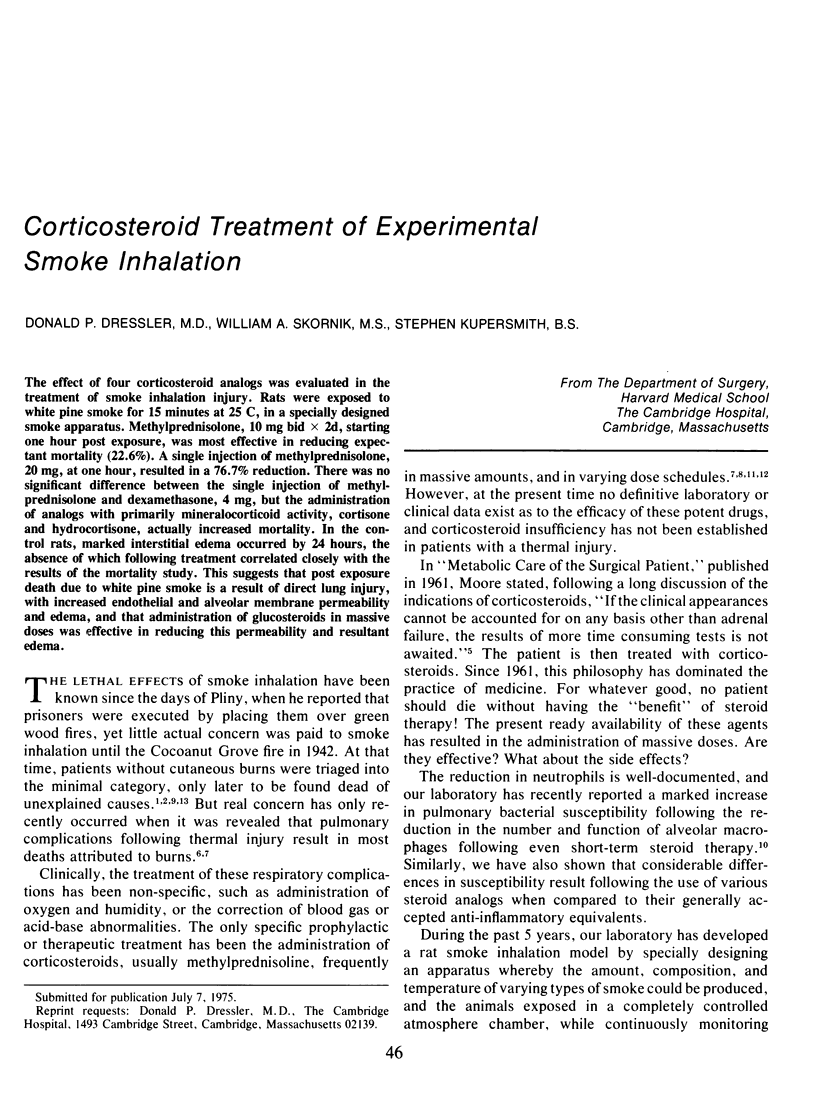
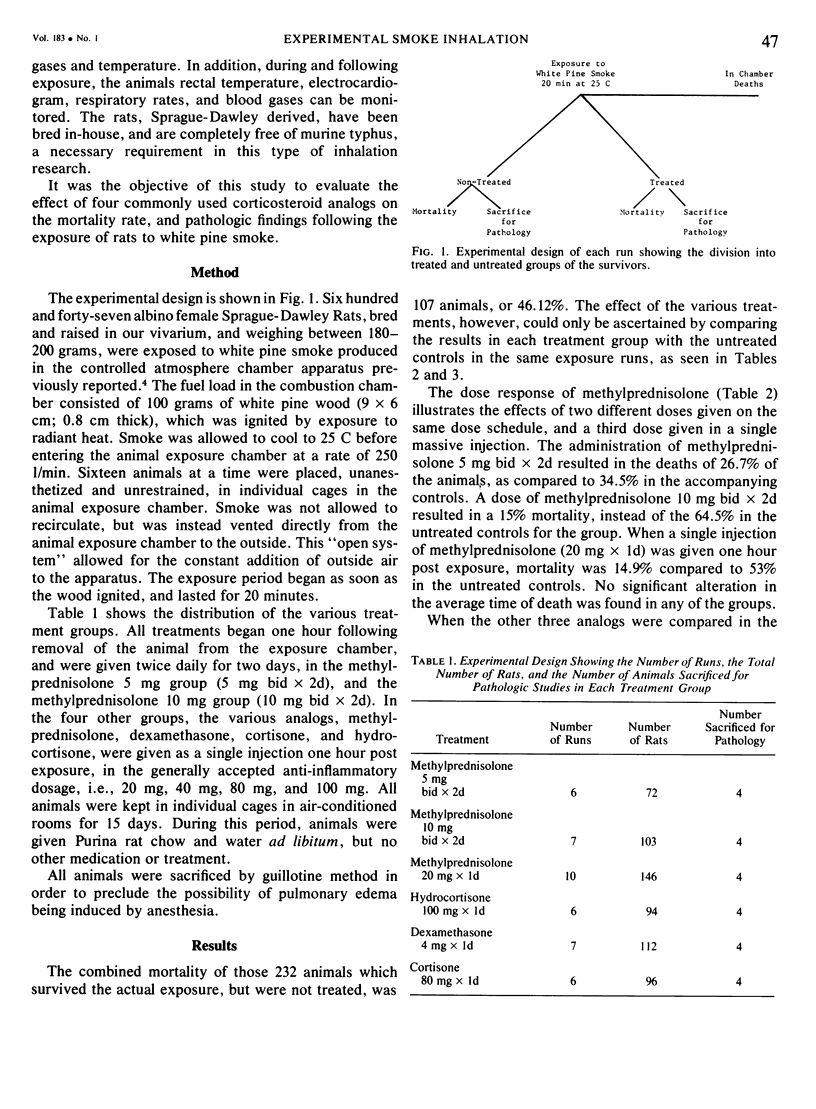
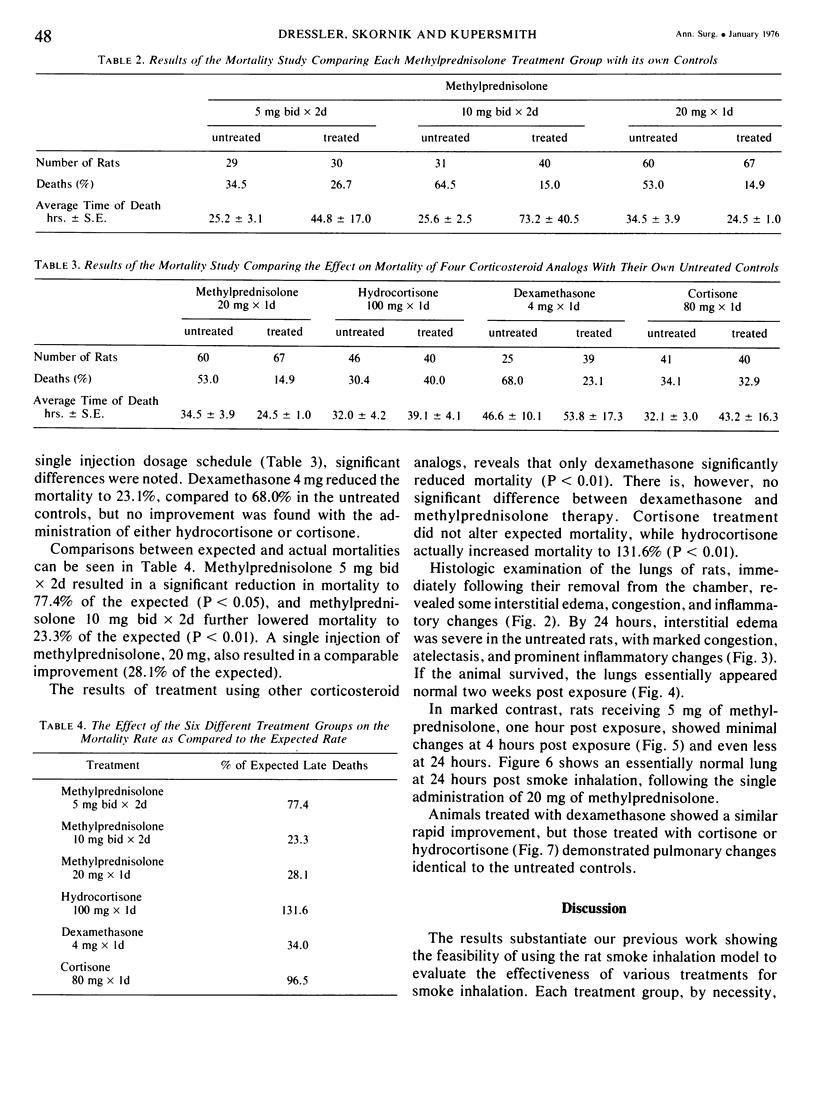
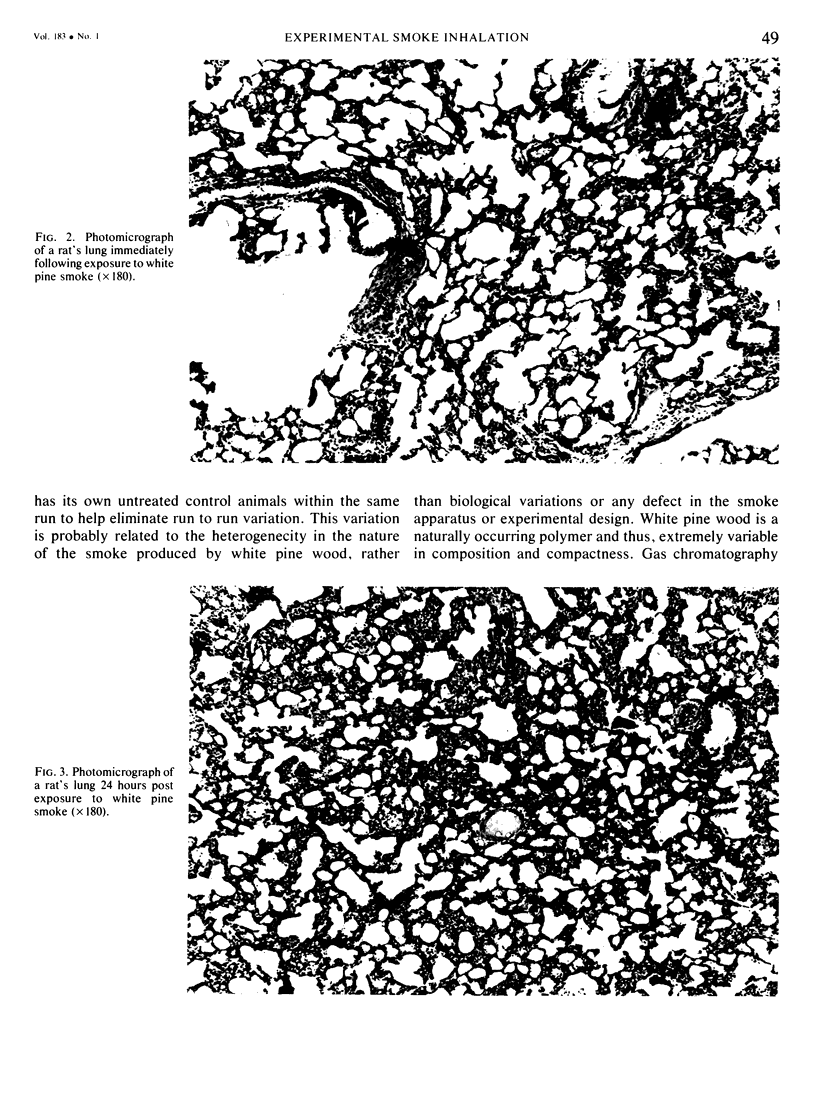
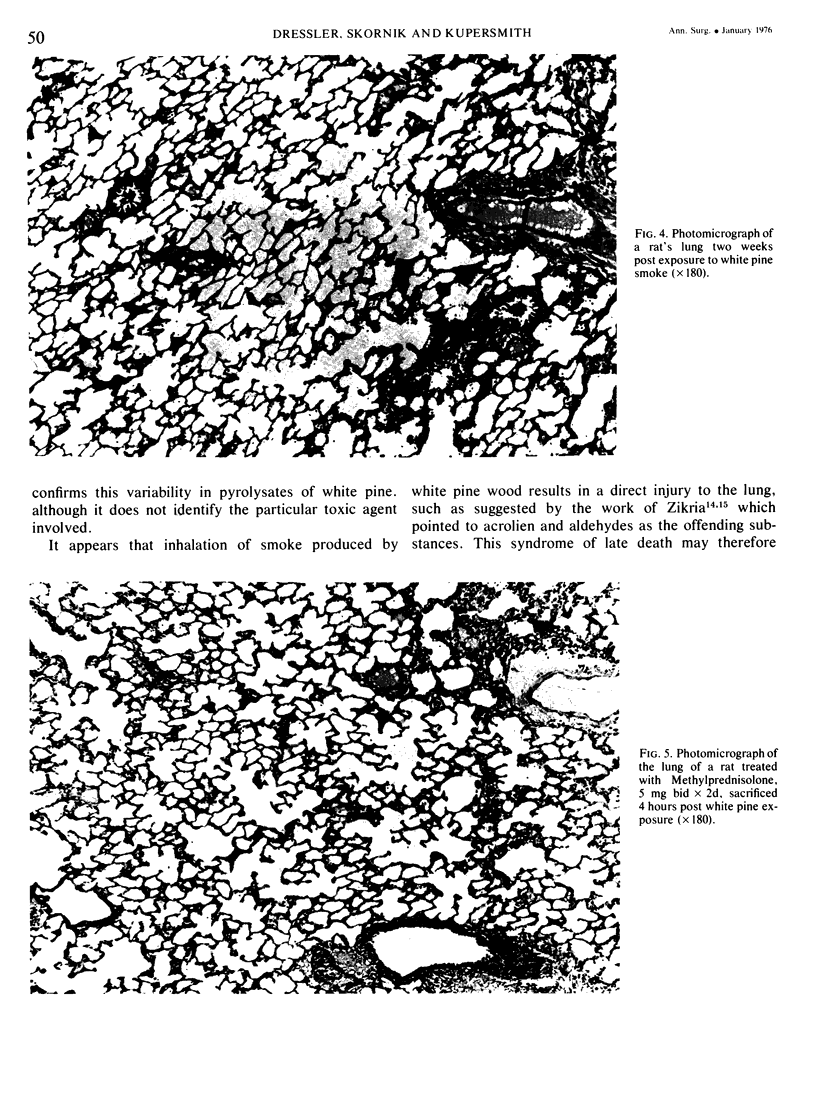
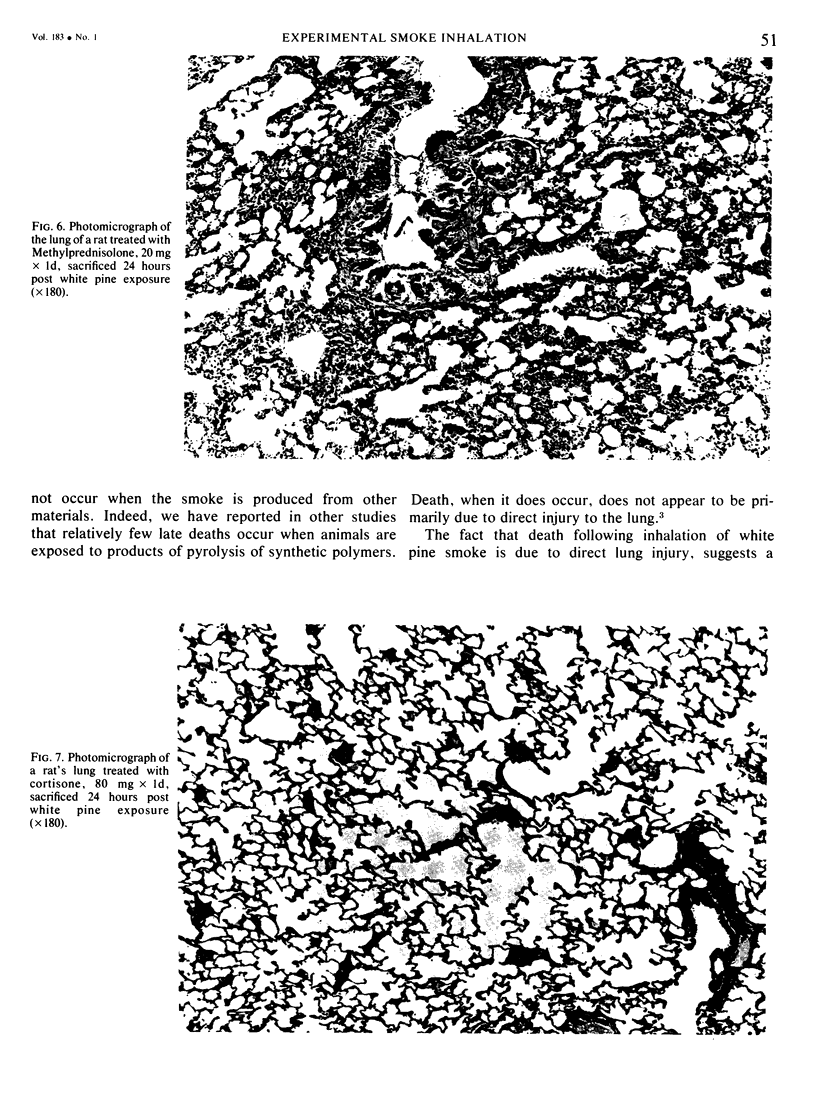
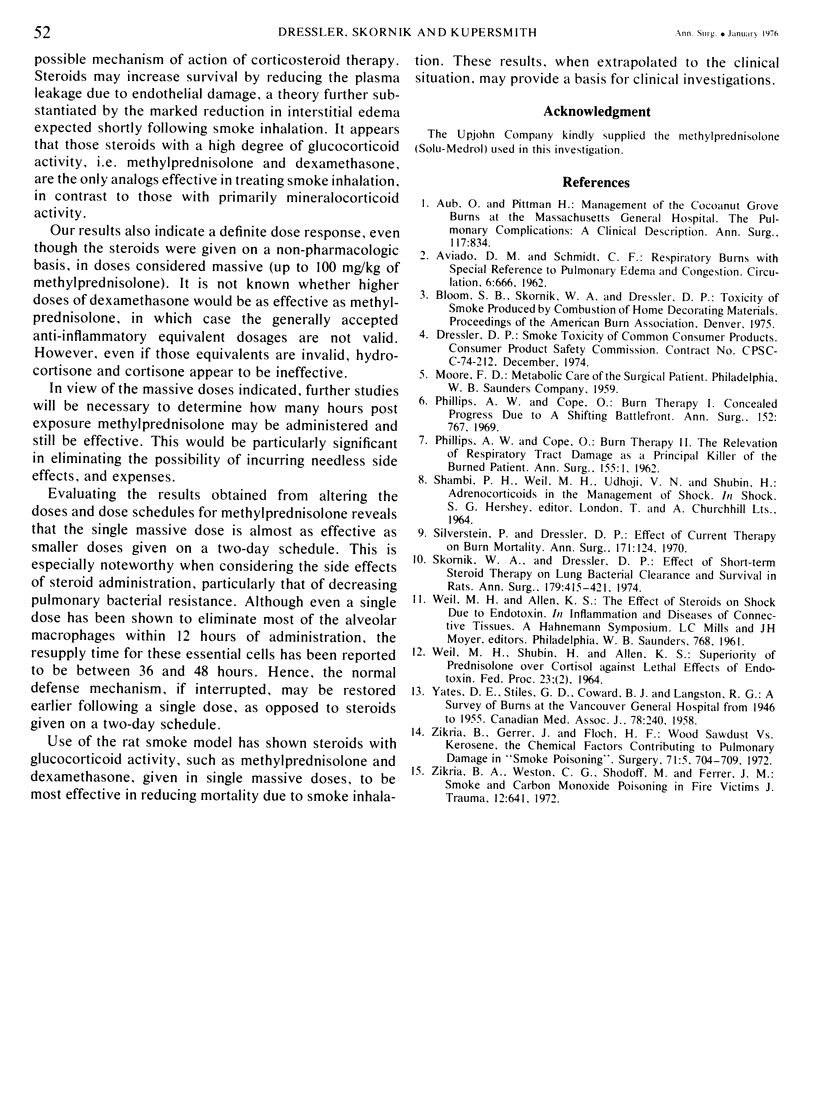
Images in this article
Selected References
These references are in PubMed. This may not be the complete list of references from this article.
- AVIADO D. M., Jr, SCHMIDT C. F. Respiratory burns with special reference to pulmonary edema and congestion. Circulation. 1952 Nov;6(5):666–680. doi: 10.1161/01.cir.6.5.666. [DOI] [PubMed] [Google Scholar]
- PHILLIPS A. W., COPE O. Burn therapy. I. Concealed progress due to a shifting battlefront. Ann Surg. 1960 Nov;152:767–776. doi: 10.1097/00000658-196011000-00001. [DOI] [PMC free article] [PubMed] [Google Scholar]
- Silverstein P., Dressler D. P. Effect of current therapy on burn mortality. Ann Surg. 1970 Jan;171(1):124–129. doi: 10.1097/00000658-197001000-00018. [DOI] [PMC free article] [PubMed] [Google Scholar]
- Skornik W. A., Dressler D. P. The effects of short-term steroid therapy on lung bacterial clearance and survival in rats. Ann Surg. 1974 Apr;179(4):415–421. doi: 10.1097/00000658-197404000-00006. [DOI] [PMC free article] [PubMed] [Google Scholar]
- YATES D. E., STILES G. B., COWAN R. J., LANGSTON R. G. A survey of burns at the Vancouver General Hospital from 1946 to 1955. Can Med Assoc J. 1958 Feb 15;78(4):240–245. [PMC free article] [PubMed] [Google Scholar]
- Zikria B. A., Ferrer J. M., Floch H. F. The chemical factors contributing to pulmonary damage in "smoke poisoning". Surgery. 1972 May;71(5):704–709. [PubMed] [Google Scholar]
- Zikria B. A., Weston G. C., Chodoff M., Ferrer J. M. Smoke and carbon monoxide poisoning in fire victims. J Trauma. 1972 Aug;12(8):641–645. doi: 10.1097/00005373-197208000-00001. [DOI] [PubMed] [Google Scholar]








